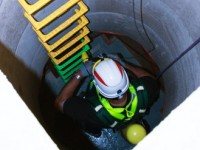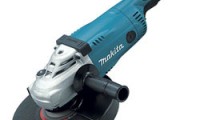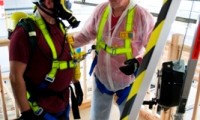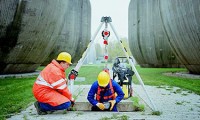The April 2014 Edition of healthandsafetyatwork.com carries an interesting box story on page 23 about excavations, which says that whether you can see the sky from inside a trench is irrelevant.
“It’s the presence of a ‘statutory risk’ – such as drowning, being overcome by gases or increased explosion risk – that tips the scale. Most trenches move in and out of confined space mode on an hourly basis. You do not always need a gas detector or a pump, but you do always need to know when you need one.”
Now this might sound like a lot of legal gobbledegook but the bottom line is that it is down to the employer to assess the risk to workers, and if the employer can demonstrate that it has done this in accordance with regulations on all known risks, then it has a defence in the event of a disaster.
The article also says: “It is best to treat every trench as a confined space until proven otherwise. Most will not be but the regulations are paranoid for a reason, and it is a useful model when juggling the hazards.
“Do your detailed assessment and planning, write up your method statement and safe systems of work, and ensure everyone on site has the training to know when things are slipping.”
The Health and Safety Executive warns in its publication about confined spaces that poisonous gas, fume or vapour can build-up in sewers and manholes and in pits connected to the system, enter tanks or vessels from connecting pipes and leak into trenches and pits in contaminated land, such as old refuse tips and old gas works.
Some confined spaces are fairly easy to identify, like enclosures with limited openings such as storage tanks, silos, reaction vessels, enclosed drains and sewers. Others may be less obvious, but can be equally dangerous, for example open-topped chambers, vats, combustion chambers in furnaces, ductwork and unventilated or poorly ventilated rooms.
The Fire and Rescue Service Operational Guidance published by the Communities and Local Government in conjunction with The Chief Fire & Rescue Adviser has a specific section 2.1.3 for generic risk assessments (GRAs) covering rescues from confined spaces with particular reference to trenches and pits.
Every year, people are injured or killed as a result of negligence or lack of knowledge in confined spaces. This is generally due to a failure of staff or responsible employers to understand the importance of confined spaces and/or a lack of equipment provided to ensure safety at all times.
PASS’s confined space training courses are City and Guilds 6150 accredited and give candidates the skills and knowledge necessary to work safely within these areas. The courses are available in various different levels and as non-entry and entry courses where candidates will be expected to enter a confined space and put their practical skills to use.
For further information visit the confined spaces page at PASS Training.








